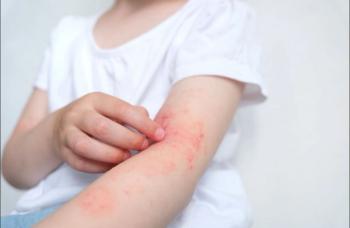
Urticaria and Angioedema
A 46-year-old woman with type 1 diabetes mellitus presented to the emergency department with wheals, flares, and severe pruritus of her face and trunk.
A 46-year-old woman with type 1 diabetes mellitus presented to the emergency department with wheals, flares, and severe pruritus of her face and trunk. Except for a low-grade fever, her vital signs were normal. The patient's eyes, lips, and tongue were grossly swollen, and she had swelling of her hands and feet.
The patient reported that the porcine insulin she had taken for 5 years had been switched to human insulin, which was considered less antigenic. Her first dose of human insulin was taken 12 hours before the onset of symptoms. The urticaria and angioedema were diagnosed as an allergic reaction to the human insulin preparation.
Urticaria arising from sensitivity to aspirin, shellfish, latex, and such environmental stimuli as cold and vibration is fairly common; urticaria secondary to human insulin is very rare. Generally, the first sign of urticaria is pruritus, followed by wheals, or hives, that form in bunches on one area of the body. These clusters remain for hours, then disappear and erupt elsewhere.
About 60% of all patients with urticaria also suffer from angioedema, which affects deeper tissue and causes swelling of the lips, eyelids, and tongue. Severe anaphylaxis can occur, leading to compromised respiratory function.
Intravenous hydrocortisone and oral diphenhydramine hydrochloride resolved this patient's symptoms in 48 hours. After 3 days, she was discharged from the hospital and switched back to porcine insulin therapy, without further sequelae.
Newsletter
Enhance your clinical practice with the Patient Care newsletter, offering the latest evidence-based guidelines, diagnostic insights, and treatment strategies for primary care physicians.


















































































































































































































































































